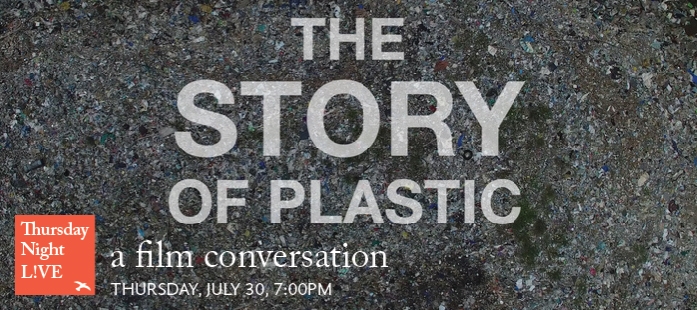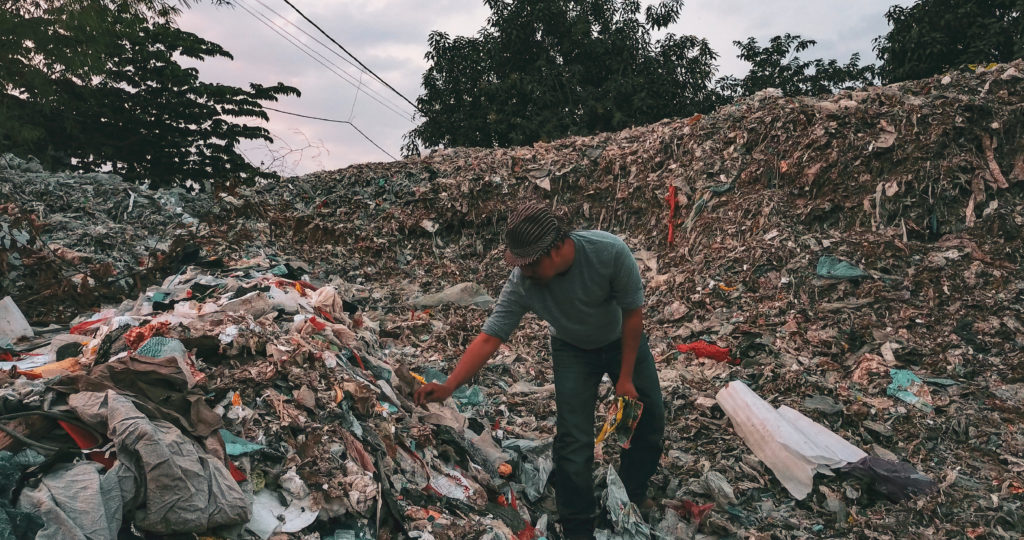 As if the pandemic, the economy, and racial justice were not enough to worry about, as if last week’s hot spell doesn’t remind us that climate change needs to be addressed too, the Schuylkill Center invites you to consider one more threat to your health and well-being: plastics.
As if the pandemic, the economy, and racial justice were not enough to worry about, as if last week’s hot spell doesn’t remind us that climate change needs to be addressed too, the Schuylkill Center invites you to consider one more threat to your health and well-being: plastics.
On the cusp of the pandemic, Philadelphia was about to ban plastic bags in the city– something many neighboring municipalities have already done, as the rising tide of single-use plastics has come under increasing scrutiny. But plastic bags are just, pardon the pun, the tip of the plastic straw.
For our planet is drowning in plastic waste. Literally. A report from the Ellen Macarthur Foundation estimates that “there will be more plastic than fish in the ocean by 2050 if drastic measures are not taken to move away from our disposable plastic culture.” Today, the world consumes an estimated five trillion plastic bags per year, with only about 1% being recycled. We have produced more plastic bags in the last decade than we did in the previous century.
And don’t get me started about single use plastic water bottles.
Worse, studies confirm that people are ingesting thousands of microplastic particles year after year, in our food and in our water– yes, microplastics flow through our drinking water– and that human blood carries with it some of the most persistent and toxic chemicals associated with plastic. What all this is doing to our health and well-being is a rising concern.
To address the issue, a new documentary, “The Story of Plastic,” has been released, and the Schuylkill Center is offering free virtual screenings. When you go to our website at www.schuylkillcenter.org and register for the event, you will receive the link to the screening– which you watch privately whenever you’d like. [pullquote]On Thursday, July 30, join me at 7 p.m. for a live Zoom conversation about the movie and the issue.[/pullquote]
The film takes a sweeping look at the crisis of plastic pollution and its effect on both people and planet. Spanning three continents, the film illustrates the ongoing catastrophe: fields full of garbage, mountains of trash, rivers and seas clogged with waste, and skies choked with the poisonous emissions from plastic production and processing. With engaging original animation, archival footage beginning in the ‘30s, and first-person accounts, the film shines a bright light on this increasingly important issue.
 Many people– including concerned Schuylkill Center staff and members– have already been reducing the amount of single-use plastics we consume, forgoing water bottles, sandwich bags, produce bags and those ubiquitous shopping bags for permanent products. Water bottles are easy, but weaning yourself off shopping bags can be quite the challenge. And there is much more to do.
Many people– including concerned Schuylkill Center staff and members– have already been reducing the amount of single-use plastics we consume, forgoing water bottles, sandwich bags, produce bags and those ubiquitous shopping bags for permanent products. Water bottles are easy, but weaning yourself off shopping bags can be quite the challenge. And there is much more to do.
The plastics industry has long promoted the idea that recycling is the best way to keep plastic out of the landfill, but more than 90% of all the plastic ever produced has not been recycled. Plastic is far more likely to end up in landfills, incinerators, or in the environment than to be recycled, and recycling systems cannot keep up with the huge volume of plastic waste being generated. Plastic recycling is always complicated– you need to first unlock the secret code on the bottom of your yogurt container and then remember which numbered plastic your municipality takes.
Consequently, much of the plastic we ship to recycling facilities– usually in China– are hopelessly contaminated with the wrong plastics. And too much of our plastic is “downcycled” anyway, turned into products like plastic lumber, which itself is not recyclable; neither is that down jacket made from spun plastic bottles. While that one more use is better, it is not classic recycling, where an aluminum can becomes an aluminum can becomes an aluminum can…
While soda and water bottles, milk jugs, and laundry detergent containers are commonly recycled, recycling rates are still shockingly low: half of the PET sold (PET is the plastic in bottles) is never collected for recycling, and only 7% of those bottles collected for recycling are turned into new bottles.
This has an impact on nature, of course, in addition to the infamous photos of animals like seals and turtles with six-pack rings choking their necks. Earlier this year, a sperm whale washed ashore in Spain, having died from ingesting 64 pounds of plastic debris. Carcasses of sea birds on remote islands have been found– decomposed– with a pile of plastic where their guts would have been; they pick bright floating objects off the ocean surface, which are not jellyfish or dead fish, but are plastics, and die as a result.
The rising tide of plastics is not the happiest story, of course, but it is an important one, perhaps even a necessary one, as that microplastic floating in your gut and those plastic chemicals in your blood present yet-unknown consequences. Join the conversation; go to our website. See you Thursday on Zoom.
By Mike Weilbacher, Executive Director
